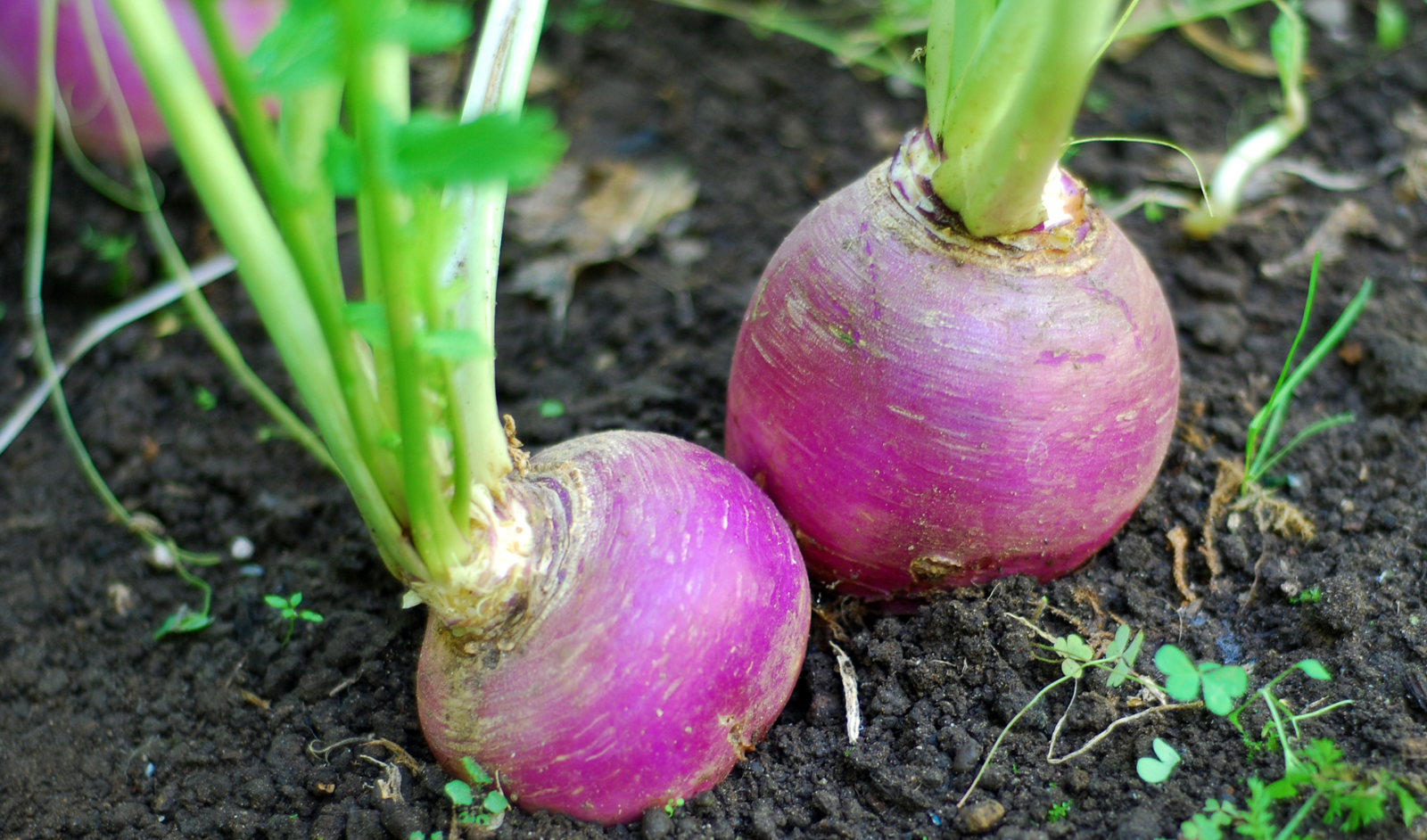The Health Benefits of Turnips:
Cooking the Purple Vegetable
Discover the terrific health benefits and delicious recipes the turnip has to offer.

Health Benefits of Turnips
Though it’s often mistaken for a member of the root family, the turnip comes from the cruciferous family with relations to Brussels sprouts, kale and broccoli, according to Medical News Today. It is, however, the bulbous root of the turnip that is most often consumed. As a product of this group, the turnip is known for its high nutrient count and its low calorie density, which makes it a perfect food to add to your healthy eating plan. In one medium-sized turnip there are just 34 calories, 4 grams of fiber when cooked and 1 gram of protein. It also contains more than half of your daily vitamin C needs.
High in fiber, the turnip may help to reduce inflammation of the colon as well as the risk of diverticulosis. Similarly, a diet filled with vegetables high in fiber can help to relieve constipation and promote regularity. Research has shown that those who consume high amounts of cruciferous vegetables have a lowered risk of developing cancer, thanks to the compound sulforaphane, noted Medical News Today.
Even the fresh leafy greens of turnips have great health benefits. One cup of cooked turnip greens provides 229 mg calcium, according to our Pritikin experts. Rich sources of calcium, such as these greens, can help to naturally strengthen bones – which is increasingly important with age. All told, the turnip is an excellent part of the Pritikin Diet and Eating Plan due to its low calorie count, high fiber count and overall nutritional profile.

Learn More About Pritikin
How to Buy Turnips for Maximum Health Benefits
Learning how to navigate the supermarket with a healthy grocery list in hand can be intimidating at first. At Pritikin, however, guests have the opportunity to join Pritikin’s Nutrition and Registered Dietitians for the Healthy Grocery Shopping Scavenger Hunt. Through a competition that practices label reading, smart shopping and more, guests dash through the aisles to fill their carts with Pritikin-approved items. Knowing how to pick out the best produce is an important piece of that puzzle.
A stem of long leafy greens sprout from the milky white root of the turnip, which is most often characterized by its bright purple color on the top of the big, round root. Though the turnip is available year-round, its peak season lasts from late fall through the end of winter. When buying this multi-purpose vegetable, you will have the option of small and large turnips. The younger, smaller turnips will have a sweeter flavor to them, compared to the stronger, spicier and more woody taste of the larger ones.
“Because turnips have such a long shelf life, they are usually readily available at the local produce store and farmer’s market,” explained Pritikin’s Executive Chef Vincenzo Della Polla.
Turnips should be hardy to the touch and void of any bumps or bruises. The top of the root should be a bright purple shade, followed by a creamy white hue, said Chef Vince. If the stem of the turnip is attached, the greens should be a bright and vivid color. In some local grocery stores, the leafy greens are removed and sold separately.
How to Cook Turnips
Though they are most commonly cooked, turnips can be enjoyed raw as well. If you plan to eat them raw, simply peel and slice the turnip like an apple to eat with dips or add to the top of your salad. Be sure to slice off the root end and remove the greens – which can be saved for cooking as well. Before cooking turnips, they should be washed, trimmed and peeled. However, smaller turnips that are less than 2 inches wide don’t need to be peeled if you are going to cook them. Depending on the cooking method, this purple vegetable can be diced, grated, chopped or sliced.
“Turnips are great for cooking because of their distinct flavor, firmness and year-round availability,” said Chef Vince. “It adds a unique, but nutritious dimension to dishes and because of the neutrality of its color, it blends in quite well with other ingredients.”
Most will agree that roasting turnips is the best way to enjoy the rich flavors of the vegetable but other cooking methods include steaming, baking and boiling. Turnips are great for mashing or adding to soups and stews.
“Some of my favorite ways to prepare turnip include, but are not limited to, roasting, mashing, adding in stews, soups, pickling and believe it or not, in my shepherd’s pie!” he said.
How to Eat Turnips: Recipes
There are a number of different ways to enjoy the health benefits of turnips, according to Chef Vince. It’s a great addition to any mashed potato or mashed cauliflower dish or serves great alone when roasted and tossed with a little bit of garlic. You can even slice the turnip very thin and bake it for healthy turnip chips. And this holiday season, you can add turnips to your stuffing for “a unique and exciting affair,” said Chef Vince.
By adding turnips to your balanced diet of natural, whole fruits and vegetables, whole grains, legumes and lean sources of protein, you’ll be well on your way to a healthier lifestyle.

Get All the Details of a Stay at the Pritikin Center in Your Inbox